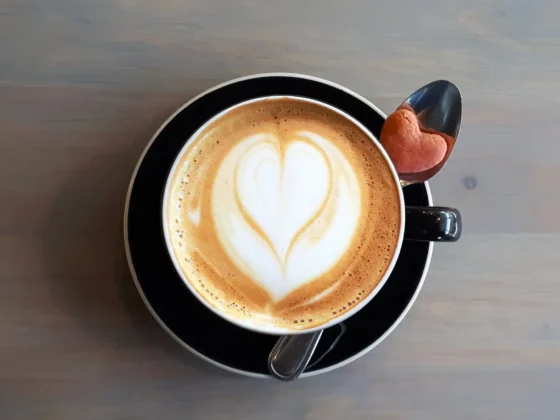Paris, a city renowned for its intoxicating blend of art, culture, and cuisine, is home to many iconic locales. Yet, amidst the twinkling lights of the Eiffel Tower and the divine hush of Notre-Dame, there is a spot where history and modernity elegantly intertwine. The Café de Flore Paris, an enchanting coffeehouse tucked away in the heart of the city, stands as a beacon of intellectual and artistic prowess that has resonated through the ages.
From its ornate art deco interior to the lively chatter that fills its warm, aromatic air, the café is more than just a coffee place. It’s a living testament to an epoch of profound thought, brimming with tales of renowned philosophers, acclaimed writers, and creative masterminds who once found inspiration within its historic walls. Simultaneously, it stands as a vibrant embodiment of contemporary café culture, offering a distinct culinary experience that satiates the palate and the spirit.
Join us as we explore the legendary Café de Flore Paris, and immerse ourselves in a journey that unfolds a rich tapestry of history, culture, and unforgettable moments. This is not merely about tracing the legacy of a renowned Parisian establishment but about reliving the stories that define the unique charm of the French capital. Welcome to this distinctive café, a timeless emblem of Parisian life.
Café de Flore Paris: Key Takeaway
- Café de Flore’s Historic Significance: The café, located in the Saint-Germain-des-Prés district, is one of the oldest and most prestigious coffeehouses in Paris. Throughout its history, it has been a gathering place for intellectuals, artists, and philosophers, and has played a significant role in the city’s intellectual and artistic life.
- The Timeless Appeal of Café de Flore: The café’s classic Art Deco interior, unique ambiance, and traditional Parisian café culture remain unchanged, transporting patrons back in time. It continues to serve as a popular spot for locals, tourists, and celebrities alike.
- Café de Flore Today: Despite changes over the decades, the cafe continues to preserve its heritage while remaining a hub for contemporary culture. It still attracts intellectual minds and continues to host events that celebrate modern art and literature.
- Café de Flore in Cinema and Literature: The café has not only influenced various artistic movements but has also made appearances in international cinema, television, and literature, further enhancing its iconic status.
- The Unbreakable Bond between Paris and Café de Flore: The café remains a beloved institution in Paris, contributing significantly to the city’s tourism and cultural life. It continues to symbolize the enduring charm, history, and vibrant café culture of Paris.
The Historic Significance of Café de Flore
Nestled in the picturesque neighborhood of Saint-Germain-des-Prés, Café de Flore, an illustrious Parisian coffeehouse, exudes a charm that is deeply rooted in its storied past. More than a century old, the café’s enduring allure lies not just in its timeless Art Deco style or its culinary delights but also in the rich tapestry of its history. From inspiring literary works to housing intellectual discourse, this unique café has played a significant role in shaping French cultural and intellectual landscapes. In this section, we embark on a journey back in time, exploring the historic roots of the café, its reputation as a hub for intellectuals, and its far-reaching cultural impact beyond the realm of café culture.
Roots of Café de Flore: A Glimpse into the Past
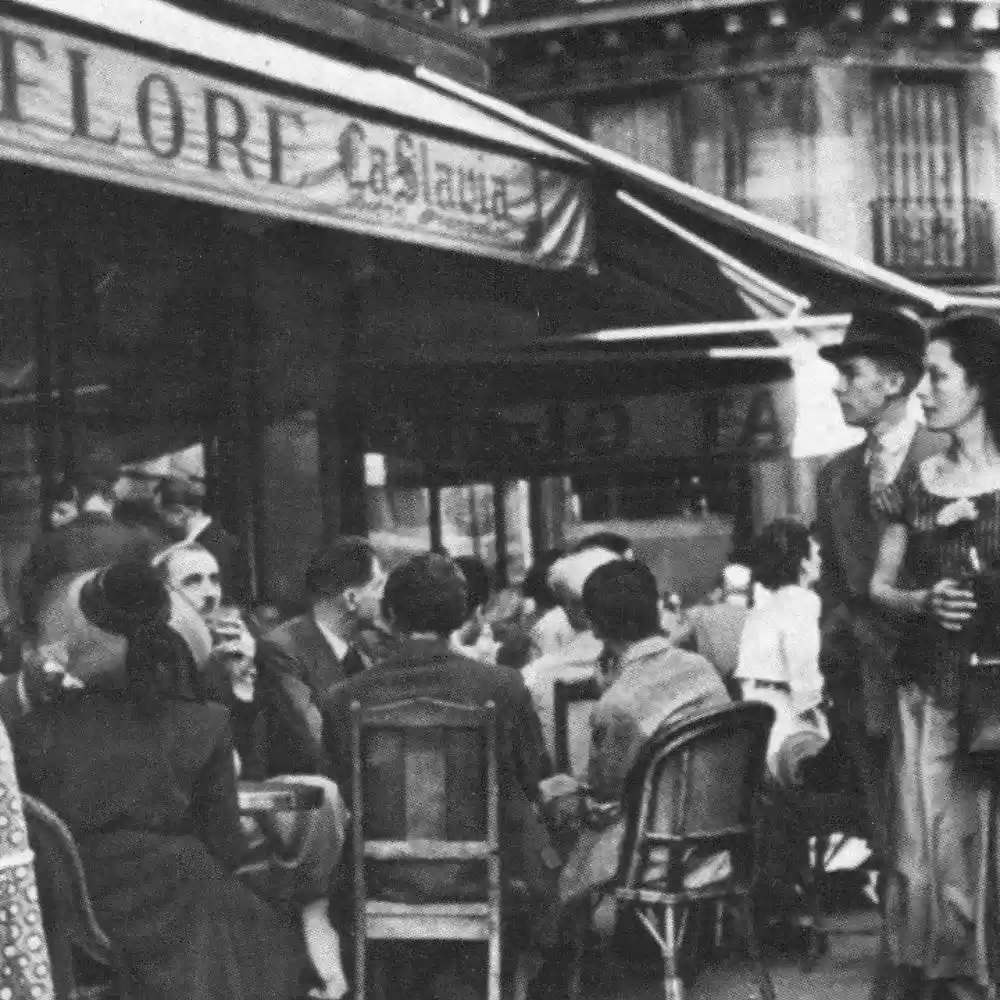
Nestled at the intersection of Boulevard Saint-Germain and Rue Saint-Benoît, Café de Flore stands as an enduring symbol of artistic and intellectual inspiration in Paris. Since the 1880s, it has been a cherished haven for creatives and thinkers alike. Derived from the captivating sculpture of Flora, the Roman deity representing spring and flowers, the Café de Flore derives its name, hinting at a lively ambiance and its burgeoning role in shaping cultural heritage. (1)
- The café emerged during the Third Republic, swiftly becoming a favored spot for renowned personalities, including authors Remy de Gourmont and Joris-Karl Huysmans.
- On the first floor of Café de Flore, Charles Maurras authored his book titled “Au signe de Flore,” while also establishing the Revue d’Action Française in 1899, making it an esteemed birthplace of intellectual pursuits.
- The classic Art Deco interior, with its striking red seating, mahogany accents, and mirrors, has barely changed since World War II, preserving the café’s timeless elegance.
Café de Flore and the Intellectuals: The Hub of Philosophy and Literature

More than just a coffeehouse, this coffee house quickly became an intellectual hub frequented by the era’s prominent writers, philosophers, and artists. Its red and mahogany confines bore witness to animated discussions, revolutionary ideas, and a unique camaraderie shared by these luminaries.
- Robert Desnos, Léon-Paul Fargue, Georges Bataille, Raymond Queneau, and even Pablo Picasso were among the regular patrons, enriching the café with their profound intellect and creativity.
- During his stay in France in the 1920s, Chinese Premier Zhou Enlai sought solace in the notable Café de Flore, adding to its international allure and leaving his own mark on its history.
- Rivaling Les Deux Magots, another popular intellectuals’ haunt, this coffee house attracted thinkers such as Emil Cioran, Eugene Ionesco, and essayist Benjamin Fondane, enhancing its reputation as a cradle of intellectual discourse.
The Cultural Impact of Café de Flore: Beyond the Café Culture
In its over a century-long existence, this café has etched an indelible mark on Parisian culture, far surpassing its role as a café. It stands as a cultural icon, nurturing creativity, and forging intellectual paths.
- American writer Adam Gopnik, in his essay “A Tale of Two Cafes” and his book “Paris to the Moon,” reflects on the café’s evolution into a popular and fashionable locale, despite its competitor, Les Deux Magots, being associated with famous thinkers like Jean-Paul Sartre and Simone de Beauvoir.
- The Café de Flore’s dedication to promoting and honoring literary talent is evident through the annual Prix de Flore, a prestigious literary prize established by Frédéric Beigbeder in 1994. This award continues to highlight the café’s enduring commitment to the literary community.
- Today, this coffee house continues to welcome celebrities and tourists alike, its historical and cultural resonance transforming every visit into an enriching experience.
An Insider’s Look into Café de Flore

What makes this café an iconic Parisian establishment is more than its famous clientele or its historic prominence. It’s the entire experience that enthralls its visitors – the mesmerizing architectural beauty, the ambiance of timeless elegance, and the culinary delights that await within its walls. As we venture beyond its famed history, we invite you to join us in exploring the aesthetic splendor, the enticing environment, and the gastronomic excellence that together defines the quintessential Café de Flore experience. This insider look will transport you into the café’s heart, revealing what makes it a beloved symbol of Paris’s enduring charm and vitality.
Architectural Beauty: The Timeless Aesthetics of Café de Flore
At the crossroads of Boulevard Saint-Germain and Rue Saint-Benoît, the façade of this coffee house stands as an iconic symbol of Parisian charm. Its architectural beauty embodies an enchanting fusion of history, culture, and Art Deco style that draws locals and tourists alike.
- The exterior of the café, adorned with green awnings and gilded script, exudes classic Parisian flair. It is an alluring sight that captivates passers-by and invites them into a world steeped in historic grandeur.
- Its interior, remarkably preserved since World War II, showcases an elegant blend of deep red seating, rich mahogany accents, and reflective mirrors. These elements come together to create a welcoming and luxurious ambiance that transports patrons back in time.
- The use of the Art Deco style, characterized by its streamlined forms and ornate detailing, lends the café a timeless aesthetic appeal. This creates a perfect backdrop against which intellectual conversations, artistic musings, and simple coffee enjoyment unfold.
Inside the Café: An Atmosphere of Timeless Elegance

The ambiance inside this café isn’t simply a result of its stunning architecture; it’s an immersive experience crafted by its rich history, notable clientele, and the lingering aroma of sumptuous French coffee.
- Stepping into the café is akin to entering a different era where time seems to stand still. The gentle clink of coffee cups, the murmur of conversations, and the soft rustling of newspaper pages recreate a picture of Paris from bygone years.
- The walls of this café whisper stories of the past—of revolutionary ideas born, literary masterpieces conceived, and influential personalities who’ve graced its seats. This sense of historical resonance enhances the café’s allure.
- Despite its historical significance, the café is far from antiquated. It vibrates with the energy of the present, serving as a gathering spot for celebrities, artists, locals, and tourists. It’s this harmonious blend of past and present that makes every visit a unique experience.
Signature Dishes: A Culinary Experience

While its rich history and beautiful architecture are integral to its charm, this café ‘s true heart lies in its culinary offerings. The café’s menu is a homage to classic French cuisine, with dishes prepared with skill and served with traditional Parisian flair.
- The café’s coffee, whether a robust espresso or a delicate cappuccino, has a reputation for excellence. Savored with a side of people-watching on the terrace, it’s an experience that embodies the quintessential Parisian lifestyle.
- This coffee house also boasts an array of mouthwatering pastries, sandwiches, and traditional French fare. From buttery croissants that melt in your mouth to a delectable Croque-monsieur, the menu is an invitation to explore French culinary artistry.
- One cannot speak of this café’s culinary experience without mentioning the iconic hot chocolate. Rich, creamy, and decadently chocolatey, it’s a comforting treat that’s loved by patrons of all ages.
- Beyond the classics, the café regularly updates its offerings to cater to contemporary tastes while maintaining a firm grip on its culinary heritage. This dedication to culinary excellence ensures that every visit to this distinctive coffee house is a treat for the senses.
The Artistic Legacy of Café de Flore
As discussed earlier, the café’s reputation as a hub of intellectual and artistic discourse is indelibly etched in Paris’s cultural history. It’s impossible to delve into the rich artistic tapestry of the City of Lights without encountering the influence of this iconic establishment. From philosophers to painters, writers to filmmakers, the café’s legacy spans across a diverse range of artistic domains, serving as both a muse and a meeting place for creative minds. This section will explore how this distinguishable coffee house has shaped and continues to shape the artistic landscape of Paris and beyond.
Art and the Café: How the Café Influenced Artistic Movements

This café’s deep connection to the world of art is an essential part of its identity. Considered one of the best coffee shops in Paris, it has always been more than a café; it has been a sanctuary for artists of all kinds.
- As a meeting place for influential artists, the café played a pivotal role in the birth and development of several artistic movements, including surrealism and existentialism. The exchange of ideas over cups of coffee here often led to artistic revolutions that reshaped cultural landscapes.
- The café was a favorite haunt of celebrated artists like Pablo Picasso, providing them with a creative environment that nurtured their artistic endeavors.
- The iconic aesthetics of this coffee house, from its Art Deco interior to its inviting façade, have also influenced various visual arts, serving as a muse for countless paintings and photographs.
Its Role in Film and Television
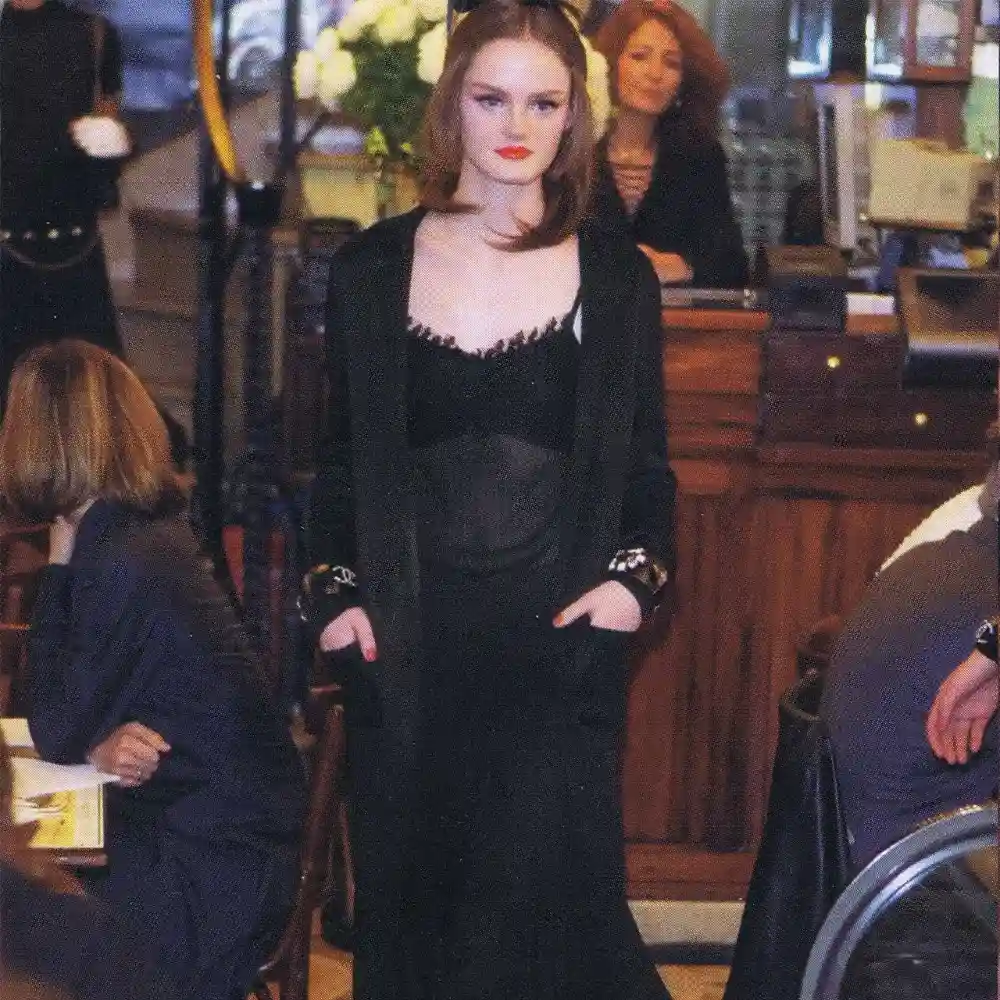
Café de Flore, with its quintessential Parisian charm and intellectual prestige, has been a favorite destination for filmmakers worldwide. Its cinematic allure, spanning decades, adds an authentic flavor to films and television productions set in the heart of Paris.
A Cinematic Time Capsule of Parisian Life
From its earlier days, this distinctive café started to make its mark in the world of cinema. Its appearance in Louis Malle’s 1963 film, “The Fire Within,” was a vivid portrayal of the café’s atmospheric allure, further solidifying its reputation as a cinematic symbol of Parisian life.
Throughout the years, the café’s distinct ambiance has continued to draw filmmakers from different genres. From French chanson singer Nicolas Peyrac, who mentioned this coffee house in his 1975 song “Et mon père,” to Amanda Lear, who chose the café as the setting for her music video “Égal” in 1981, the café’s cultural impact in the entertainment industry is undeniable.
Its inspiration stretches into literature, with iconic American novelist James Baldwin penning much of his classic novel “Go Tell It On The Mountain” within the café’s walls, blending the worlds of literature and cinema seamlessly.
From Classic Films to Modern Television
The café’s cinematic legacy continues into the new millennium with its features in popular television shows and films. It was featured in the British comedy series “Absolutely Fabulous” in 2001, contributing its unique charm to the episode set in Paris. The French film “Les Amants du Flore” (2006), served as the backdrop for the passionate love story between philosophers Jean-Paul Sartre and Simone de Beauvoir.
Even in recent years, this café has continued to captivate audiences with its appearances in modern productions. Its charm was harnessed in the 2011 film “Love Lasts Three Years,” and more recently, in the hit Netflix series “Emily in Paris,” where it lent an authentic Parisian flavor to the storyline.
Even the music scene hasn’t been immune to the café’s allure. The Moldovan singer The Motans released a song in 2022 named “Cafe de Flore,” paying homage to this timeless institution.
Each appearance of this coffee house on screen underscores its emblematic status, continuing to enthrall viewers with its Parisian charm and introducing new generations to its rich cultural history.
Café de Flore in Literature: Inspiration for Writers

The profound relationship between this café and literature is etched into its very foundations, making it an enduring source of inspiration for writers.
- The café’s literary legacy began with its early patrons, prominent writers like Joris-Karl Huysmans and Remy de Gourmont, who found it a stimulating backdrop for their literary pursuits.
- Its influence transcends national borders and languages, making appearances in books from different literary traditions. From novels to essays, the café has been immortalized in countless texts.
- As mentioned before, the Prix de Flore, a literary award initiated in 1994 and presented annually at the café, is a testament to its ongoing commitment to supporting and celebrating literary arts. The award not only honors emerging authors but also perpetuates this café’s rich literary tradition.
Experience Café de Flore Today

For those seeking to capture the essence of Paris, experiencing this unique coffee house is an indispensable part of that journey. The café, woven into the city’s history, continues to be a vibrant part of its present and future. It stands not merely as a testament to an illustrious past, but as a thriving epicenter of culture, community, and the art of living well. Whether you’re a local or a traveler, a philosopher or a foodie, this café has something to offer you. From its unforgettable atmosphere to its timeless cuisine, every moment spent within its walls promises a unique encounter with the soul of Paris. Today, we invite you to join us in this journey of exploration, delight, and discovery at this distinctive coffee house.
From Morning Coffee to Evening Aperitifs
Even today, this café remains an indispensable part of Parisian life, enchanting patrons from sunrise till the evening’s last light. As one of the most revered coffee shops in Paris, a typical day at this coffee house is a symphony of delightful experiences.
- Start your morning with the rich aroma of freshly brewed coffee as the café opens its doors to greet the day. From robust espressos to frothy cappuccinos, every coffee connoisseur can find their desired brew here.
- As the day progresses, enjoy the café’s assortment of delectable pastries, sandwiches, and classic French dishes for lunch. Each offering embodies the café’s commitment to culinary excellence.
- The evenings at this coffee house are a celebration of Paris’s vibrant nightlife. Whether it’s the bubbling excitement of a Champagne aperitif or the soothing allure of an evening coffee, the café beautifully transitions from the hustle of daytime to the relaxed elegance of the night.
Meet the Staff: The People behind the Magic of Café de Flore

The magic of this café doesn’t just lie in its illustrious past or stunning architecture; it is brought to life every day by the dedicated staff, whose passion for their craft enhances the café’s allure.
- The baristas, masters of their art, ensure every cup of coffee served embodies the café’s high standards. Their expertise adds to the charm and authenticity of this café experience.
- The chefs, committed to culinary excellence, artfully prepare each dish, from traditional French delicacies to innovative fusions, honoring the café’s gastronomic heritage.
- The waitstaff, with their warm smiles and professional service, complete the delightful ambiance. They contribute to the café’s friendly, welcoming atmosphere, making every patron feel like part of this Café family.
Visitor’s Guide: How to Best Experience Café de Flore
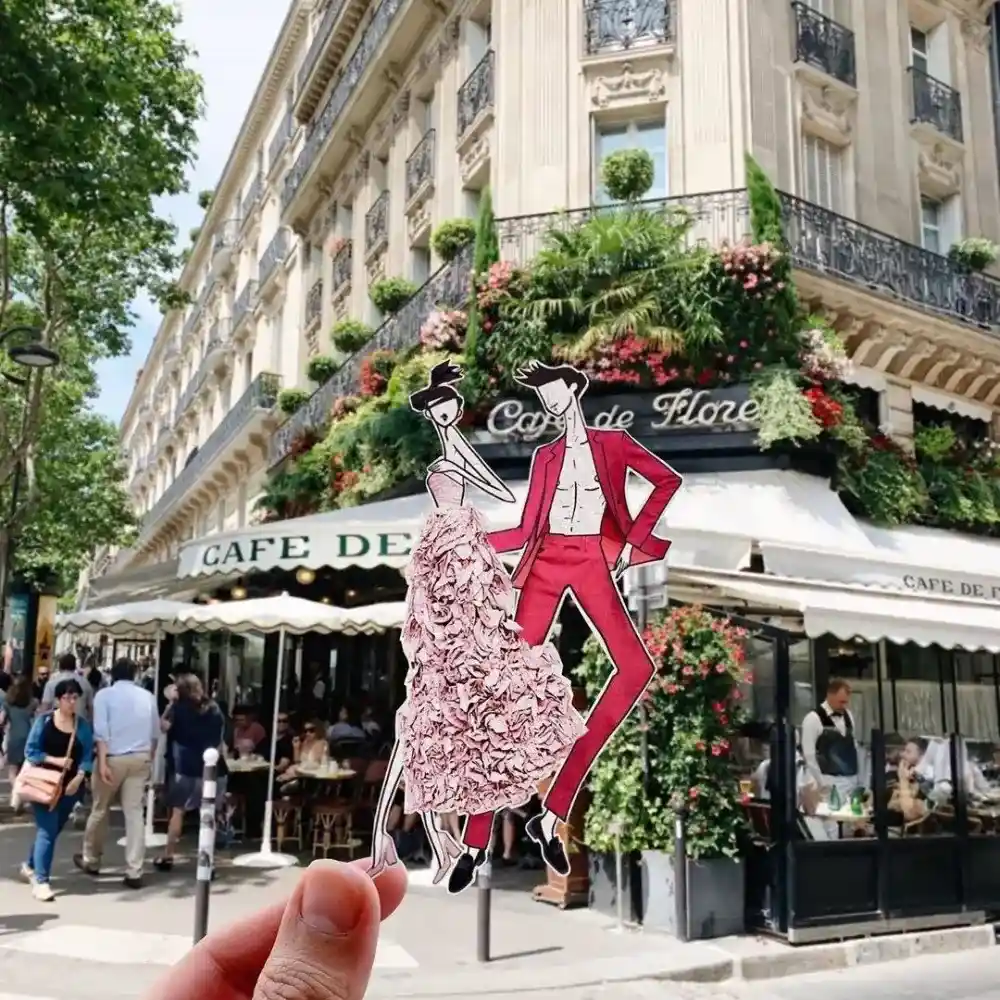
While this café is a must-visit locale for any Parisian itinerary, here are some tips to enhance your experience:
- Arrive early to enjoy a peaceful morning coffee, and seize the opportunity to grab a seat on the terrace, the perfect spot for people-watching.
- Dive into the café’s rich history and cultural significance. You’re not just stepping into a café, but a locale that has been the breeding ground for revolutionary ideas and profound intellectual discourse.
- Don’t hesitate to interact with the staff. Their knowledge of the café’s history and offerings can enrich your visit.
- Finally, take the time to savor the moment. Whether you’re nibbling on a buttery croissant, sipping on a luscious hot chocolate, or simply absorbing the café’s bustling energy, remember that every moment at this coffee house is part of its continuing story.
Café de Flore and Paris: An Unbreakable Bond
The city of Paris and this café share a deep, intertwined relationship, with each representing an essential piece of the other’s identity. The iconic café stands as a symbol of Parisian culture, reflecting the city’s intellectual spirit, historical depth, and unique charm. This section delves into this enduring bond, exploring how this café has become an indelible part of the Parisian landscape and its contribution to the city’s tourism.
Paris and Café de Flore: A Tale of Two Icons
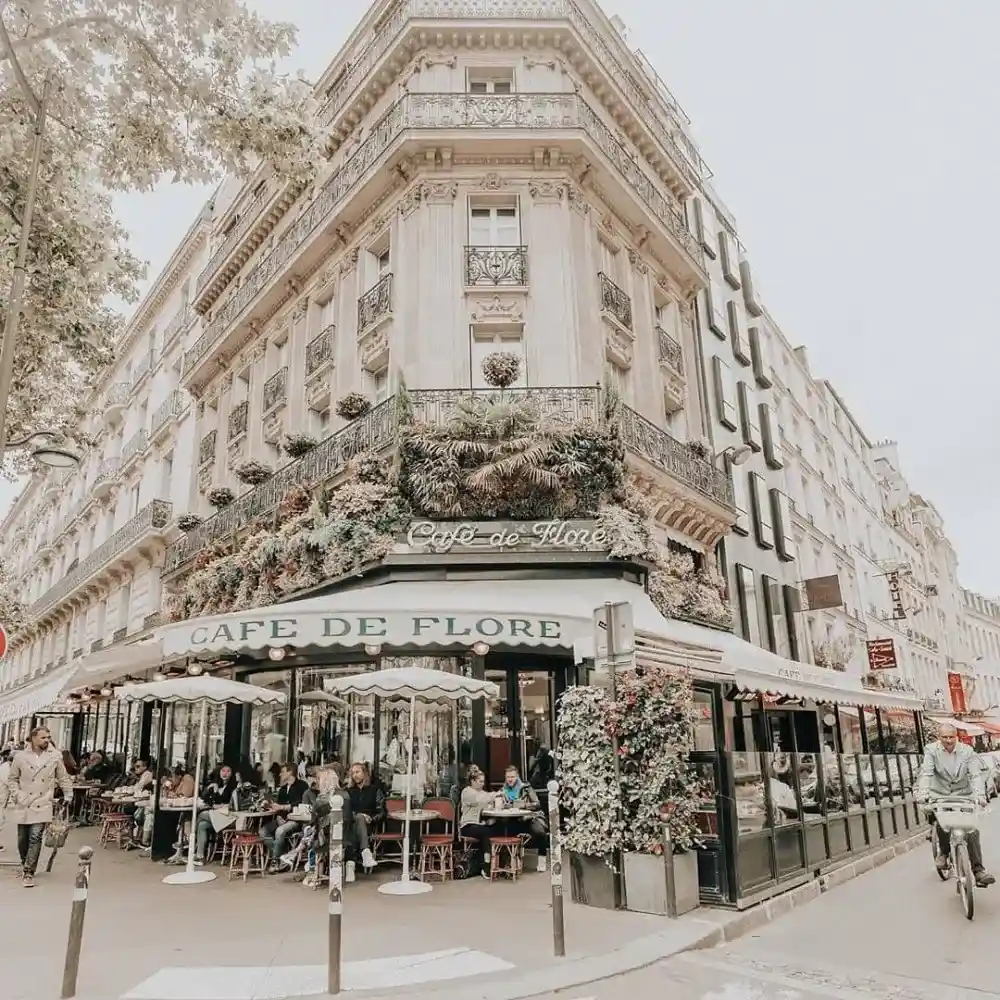
Much like the Eiffel Tower or Notre Dame, this café is intrinsically linked to the global image of Paris. Since its establishment in the 1880s, the café has come to embody the vibrant, intellectual atmosphere of the City of Lights. From its position on the corner of Boulevard Saint-Germain and Rue Saint-Benoît, it offers an authentic slice of Parisian life, where the world’s thinkers, artists, and dreamers have gathered to converse and create. Its intricate connection with Paris is more than just geographical; this coffee house is a part of the city’s beating heart, reflecting the ethos and history that make Paris truly unique.
Café de Flore’s Contribution to Paris’ Tourism
As one of the oldest and most famous coffee shops in Paris, this café is more than just a spot for a quick coffee. It’s a tourism magnet that draws visitors who want to experience Paris’s quintessential café culture, appreciate the timeless Art Deco interior, or simply sit where their favorite philosophers and writers once did. The café’s allure goes beyond its rich history; its enduring relevance in literature, film, and popular culture continually adds to its attraction, making it a must-visit spot on any Parisian itinerary. This coffee house is not merely a destination; it’s an experience that offers tourists a taste of Paris’s intellectual and cultural richness.
Exploring the Saint-Germain-des-Prés
While this café is undoubtedly a jewel in the crown of the Saint-Germain-des-Prés district, the area itself is teeming with historical and cultural treasures. Nestled in the 6th arrondissement of Paris, Saint-Germain-des-Prés is known for its bohemian past and its reputation as a hub for intellectuals and artists. Just a stroll around the neighborhood uncovers a host of art galleries, antique shops, chic boutiques, and a myriad of other historic cafés such as Les Deux Magots. A visit to this coffee house is indeed incomplete without exploring the vibrant streets of Saint-Germain-des-Prés, immersing oneself in the artistic and intellectual spirit that permeates the area.
Café de Flore vs. Les Deux Magots

Situated almost adjacent to each other in the Saint-Germain-des-Prés district of Paris, Café de Flore and Les Deux Magots are often seen as archrivals in the Parisian café scene. Both are steeped in history, frequented by a who’s who of the intellectual and artistic world, and exude a quintessentially Parisian charm. Yet, each holds its distinct allure and legacy.
Les Deux Magots is older than Café de Flore by a few years. It has long been a beacon for literary and intellectual dialogue, hosting figures such as Ernest Hemingway, Albert Camus, and the existentialist duo, Jean-Paul Sartre and Simone de Beauvoir. (2) Much like Café de Flore, its role in shaping Parisian culture is undeniable. Its terrace offers a prime view of the historic Saint-Germain-des-Prés Church, providing an added layer of aesthetic appeal.
Meanwhile, Café de Flore, while younger, has an equally compelling history. From playing host to the surrealist movement to being a preferred spot for Pablo Picasso, the café’s patron list is just as impressive. Its classic Art Deco interior lends an ambiance of timeless elegance that has remained largely unchanged since World War II.
Comparing the Enchanting Ambiance
In terms of atmosphere, both cafes are similar, with their buzzing terraces, classic interiors, and ambiance filled with a sense of history. However, they each have their unique touches. This café de Flore is often perceived as slightly more chic and upscale, whereas Les Deux Magots has a slightly more relaxed and traditional feel.
To sum up, comparing these two coffeehouses is much like comparing two great works of art. Each has its own charm, history, and atmosphere. To truly grasp their significance and the roles they’ve played in Paris’s cultural history, one must experience both. It’s less of a competition and more of a shared history – a testament to the intellectual and artistic richness of Paris. For tourists and locals alike, a visit to these legendary cafés offers a taste of the city’s vibrant café culture and a journey into its fascinating past.
Conclusion
Café de Flore in Paris is more than just a coffeehouse – it’s a legendary institution steeped in a rich history and a vibrant culture. From its early days as a gathering place for intellectuals and artists to its present status as a beacon of Parisian life, The cafe embodies the spirit of Paris in its most enchanting form.
Every cup of coffee served, every conversation held within its walls, and every famous personality that walks through its doors, adds another layer to the café’s captivating story. As much as this café is a testament to Paris’s past, it’s also a part of its present and its future, remaining a thriving hub of contemporary culture.
Whether you’re seeking a taste of the city’s intellectual history, an authentic Parisian atmosphere, or simply a great cup of coffee, a visit to this café is sure to deliver. Stepping into this cafe is like stepping into a piece of Paris’s history, and that’s an experience that remains as compelling today as it was a century ago.
As we’ve explored in this article, Café de Flore Paris truly stands as a timeless symbol of Paris’s enduring charm, rich history, and vibrant café culture. It’s more than just a café; it’s an experience, an institution, and a beloved piece of Paris. It invites us all to partake in its story, one cup of coffee at a time.
FAQ
What is the cultural significance of Café de Flore?
The café is renowned as a meeting place for intellectual thought and artistic expression, hosting famous figures such as Picasso, Sartre, and Beauvoir, and impacting cultural movements in Paris and beyond.
How has Café de Flore influenced French art and literature?
The café has significantly influenced French art and literature by serving as a gathering spot for artists and writers and providing a setting and inspiration for various works of art and literature.
What can you expect when visiting the café today?
Today, visitors to this café can expect a charming Parisian atmosphere, delicious culinary offerings, an enchanting Art Deco interior, and a taste of Paris's rich history and vibrant café culture.
How does this café contribute to Paris' tourism and culture?
The café contributes to Paris' tourism and culture by attracting tourists with its rich history, cultural significance, and iconic status as a symbol of Parisian life.







